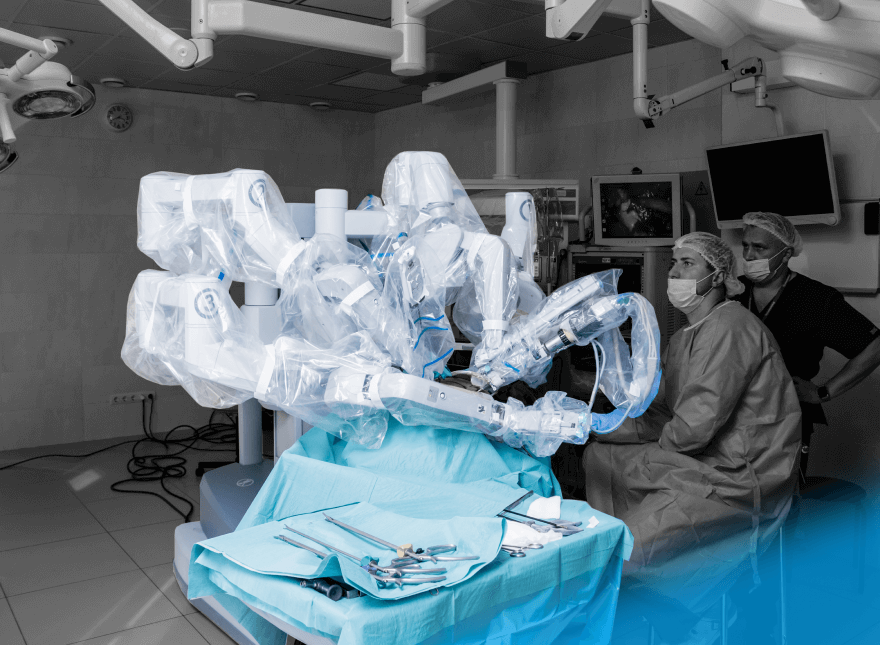Check out our latest blog article: From component to enterprise – modular robotics done right.
When Innovation Hurts: IoT Vulnerabilities in Healthcare

Medical devices connected to the internet have made it easier for doctors and patients to communicate, but they've also opened up some serious IoT vulnerabilities in healthcare. A study found that over half of hospital IoT devices are vulnerable to attack. Now, sensitive patient info can fetch a premium on the dark web. So, it's unsurprising that healthcare IoT vulnerabilities have made it a prime target for cyberattacks year after year.

It's critical for healthcare software creators to prioritize IoT cybersecurity. This article highlights the main vulnerabilities in healthcare IoT and gives you some pointers on avoiding them. Don't skip out on the practical tips and advice at the end of the article.
Threat 1: Surge in Medical Devices
IoT and healthcare gadgets are everywhere thanks to cheaper sensors and faster internet. They're connecting to the same networks and, with the help of AI, speeding up diagnoses and improving patient experiences. The pandemic has only accelerated this trend, making smart medical devices more essential than ever. But with this surge comes a healthcare IoT security risk—data breaches, malware, and viruses are lurking. Some of the most vulnerable devices, like infusion pumps and wireless vital monitors, can compromise entire systems with only a weak password. To stay ahead, ensure every endpoint is locked down tight, with strong passwords and multi-factor authentication.
Threat 2: Telehealth Boom
Telehealth used to be primarily in rural areas, but now it's gone mainstream. COVID-19 pushed it even further, allowing patients to see specialists and get care from home. But this convenience comes with its own set of risks. Wearable devices, cloud databases, you name it—all need rock-solid cybersecurity. And with no universal standards, every app is different, leaving room for cybercriminals to sneak in. Securing those network connections is key, along with adding extra layers of verification, like security tokens and retina scans.
Threat 3: Legacy Systems
Many healthcare organizations still use outdated equipment on ancient operating systems like Windows XP. These relics are a goldmine for hackers, especially since they often miss updates. Plus, outdated data transfer standards leave the door wide open for breaches. Ransomware attacks, like the notorious Ryuk, have been hitting healthcare hard, demanding huge ransoms to unlock vital systems. To avoid falling victim and decrease IoT vulnerability, keep everything up to date and increase security across the board.
Threat 4: Old Hardware
Outdated hardware is another weakness in healthcare cybersecurity. Manufacturers focus on the shiny new things, leaving older devices vulnerable to attack. Without regular updates and patches, these devices are waiting for a hack to happen. Planning for the end of life of your assets and making sure vendors provide ongoing support is crucial. That way, you can stay compliant with regulations like HIPAA and keep your systems safe.

Threat 5: Medjacking
Medjacking is every healthcare provider's nightmare—a hacker taking control of a medical device to steal sensitive info or even harm patients. From wireless blood pressure cuffs to surgical robots, any device connected to the network is a potential target. To prevent disaster, make sure every device is locked down with the latest hardware and software updates. You should also consider using AI to detect and respond to security threats in real time.
What you can do:
This list feels daunting, but it's manageable when you have the right partner on your side. Our newsletter covers topics like this every month and, if you read on you'll see our 6 steps to ensuring your cybersecurity is ready to handle these threats.
6 Steps to Cybersecurity in Healthcare IoT
To keep your healthcare IoT setup safe and sound, follow these steps:
- Start with security in mind and keep everything up to date.
- Protect your cloud environment with encryption and multi-factor authentication.
- Secure those network connections with extra layers of verification.
- Divide and conquer with network segmentation, keeping sensitive data separate.
- Embrace OTA updates to keep firmware and software current.
- Harness the power of AI to identify and respond to security risks automatically.
Cybercriminals are always on the prowl, but with the right precautions, you can keep your healthcare IoT setup safe and secure. And if you need a hand, Softeq is here to help.
More articles on the topic






